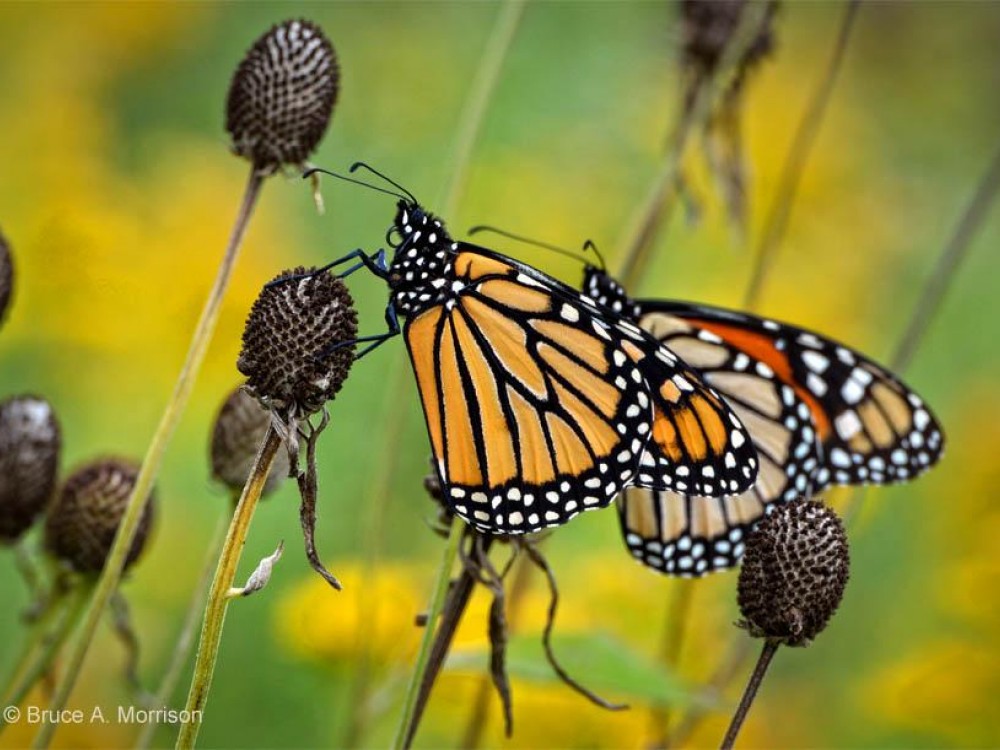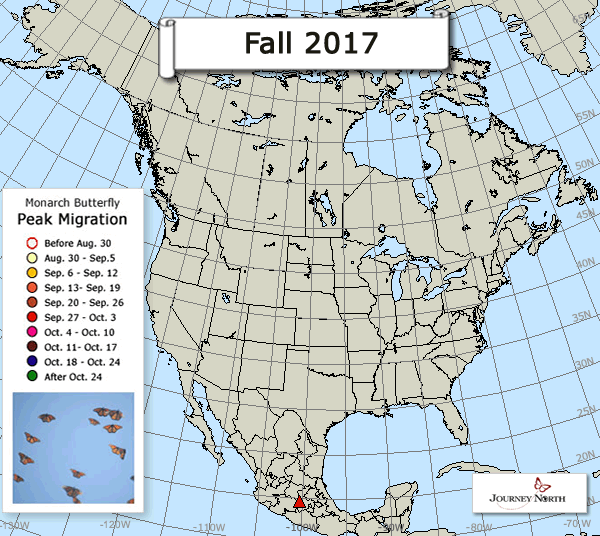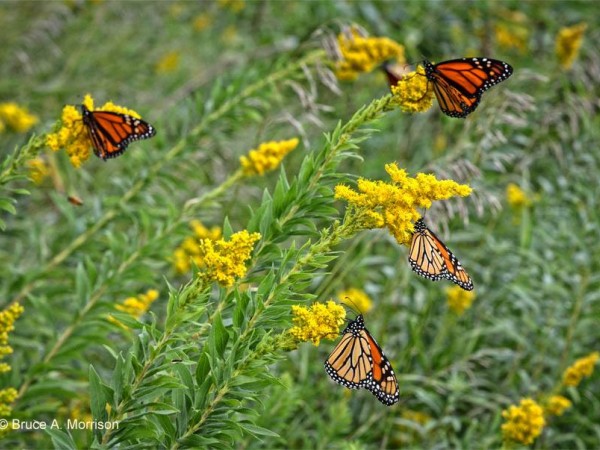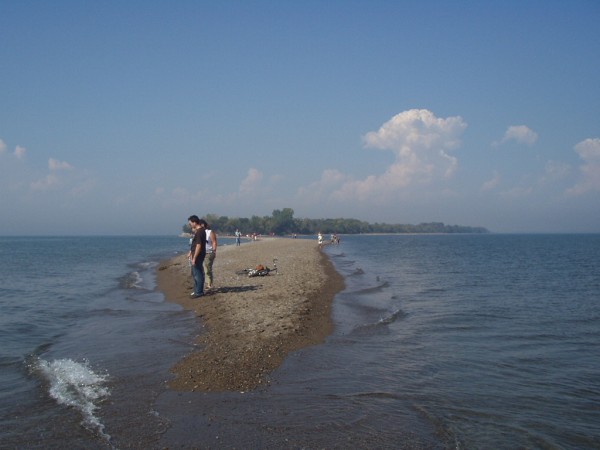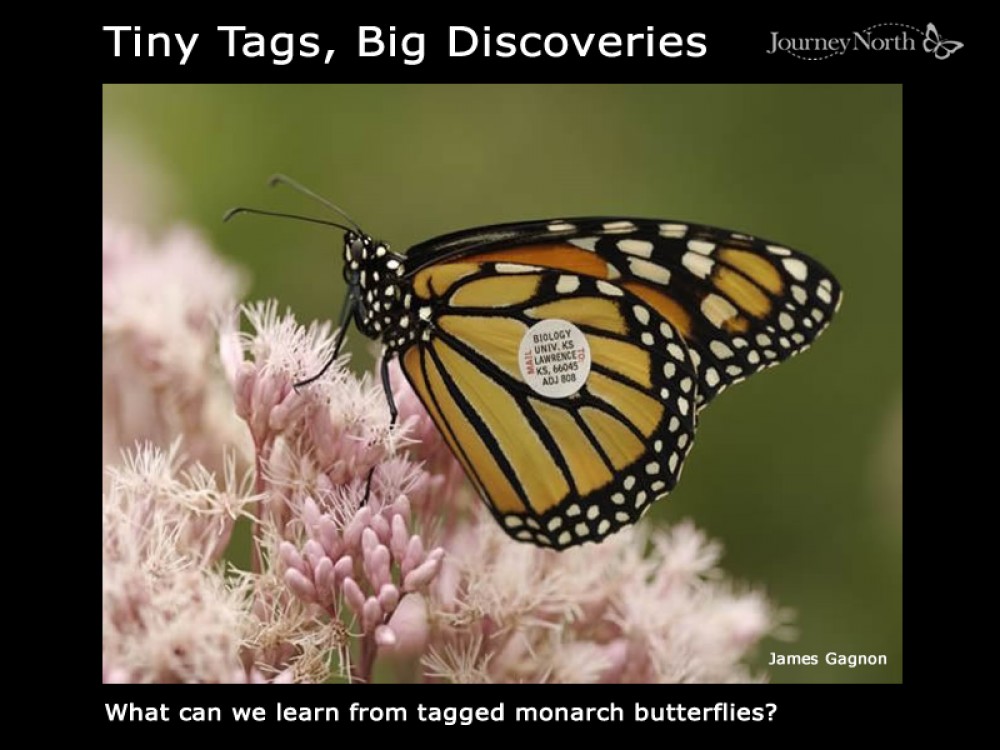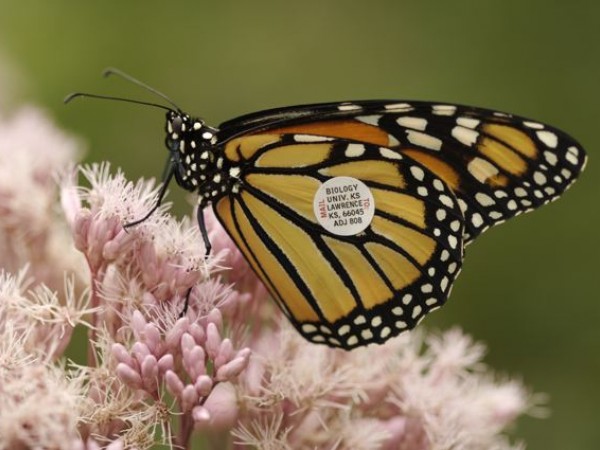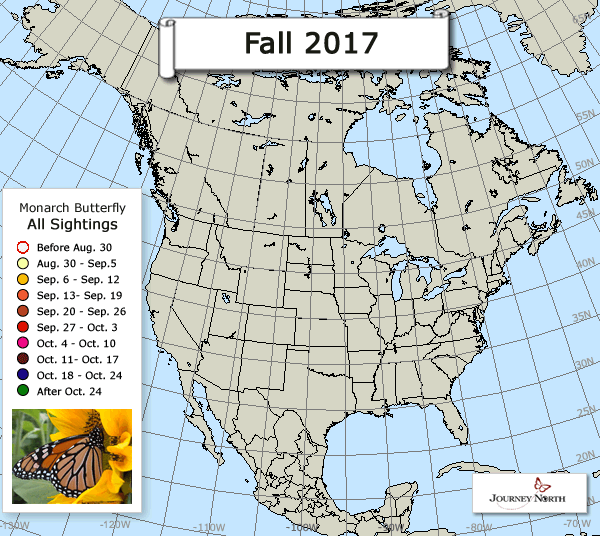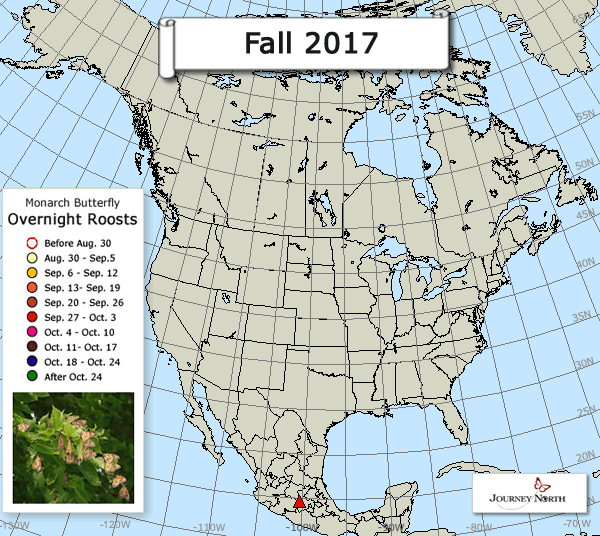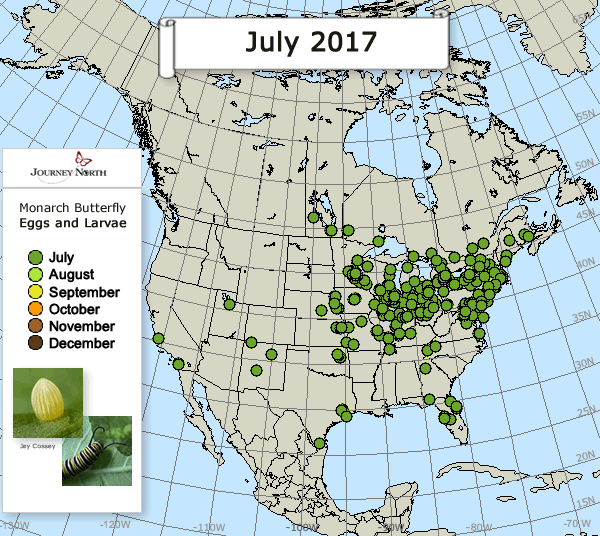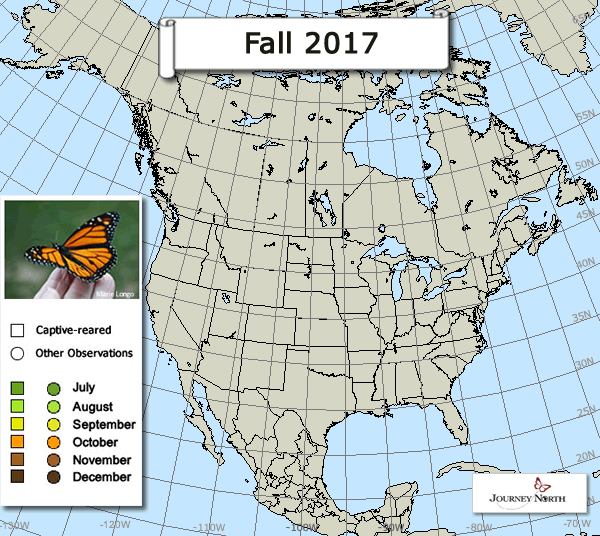A 300-Mile Advance
The migration advanced 300 miles in just two weeks. How long does one monarch's journey take?
Leading Edge
During the past week, the migration advanced half-way across Iowa and into northern Nebraska. It's moving at a pace of 20 miles per day and the leading edge is now 1,500 miles from the overwintering sites in Mexico. When do you predict the first butterflies will arrive?
Monarchs were nectaring on the prairie, crossing Lake Erie, visiting the MN State Fair, and flying high overhead.
"I work on the 8th floor and see them flying by my window," wrote Stacey Wilber from Minneapolis, Minnesota on September 1st.
Tracking Migration, Advancing Science
Scientists use the sightings observers contribute to gain understanding about migration. This year's pace of migration matches that in past years, as documented in a scientific study based on Journey North data.
"We used sightings of fall roosts submitted to Journey North to derive estimates of the pace of migration throughout the central flyway...The migration progresses southward at a rate of 32.2 km/d during fall migration," noted Dr. Andy Davis.
Weathering the Storm
Hurricane Harvey reminds us about one of the perils of fall migration. During intense conditions, monarchs must hunker down in sheltered places. Once the high winds and battering rains pass, they need to find food resources. Food availability is essential for surviving the aftermath of a storm. Observers have been reporting from the affected areas.
"I was so happy to see the Monarchs today after Hurricane Harvey finally left our area," wrote Jennifer Wyer from Houston on August 30th.
Harvey struck before the main migration reached Texas; peak migration begins the first week of October. The impact on nectar sources remains a concern. Also fortunate, most monarchs do not move along the Gulf Coast; they cross west central Texas.
How Long to Mexico? Tagged Monarchs Reveal Clues
Fall Monarch Migration 2017
Please report all monarchs you see:
- Adults
- Eggs & Larvae
- Overnight Roosts
- Peak Migration Events

